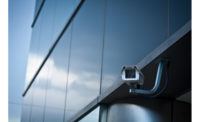Last summer, we were already a few months into a pandemic-induced lockdown. Businesses everywhere were closing their doors, employees were working from home, and, luckily, most security professionals were considered to be ‘essential.’
For many in the security monitoring industry, business seemed to be going well. The ultimate question on everyone’s mind, though, was just how long all of this would last. Luckily, after more than a year of this ‘new normal,’ the video monitoring market in particular seems to be doing better than ever.
“The pandemic accelerated the adoption of video monitoring in many new vertical markets,” says Jeremy White, founder of Pro-Vigil, San Antonio, Texas. “Shelter-in-place mandates meant security personnel could no longer be onsite to protect organizations from crime. Simultaneously, as the economy trended downward throughout 2020, companies were forced to cut costs. Video monitoring emerged as an optimal solution to both problems, as it helps organizations affordably secure sites, even when they’re unoccupied. Ultimately, it’s an effective way to reduce expenses without sacrificing security. Video monitoring truly provided the peace of mind that business owners were looking for when the world suddenly changed overnight, and they didn’t have a lot of time to react.”
This search for peace of mind was a massive driver in adoption over the past year, says Sean Foley, senior vice president of national accounts at Interface Security Systems, Earth City, Mo.
“Over the past year monitoring is more important because arguably the world is more dangerous than it was pre-COVID-19, and we have seen upticks in violent crime, burglaries in certain areas and the turmoil the George Floyd [killing] caused in certain cities,” he explains. “Video monitoring to assist in those situations has become more important than ever and more exciting due to advances in the technology. We’ve been fortunate enough to experiment, test and implement a lot of these new features powered by machine learning and AI, and that’s really been driving things.”
Michael Zydor, managing director of Affiliated Monitoring, Union, N.J., agrees that the advancement of analytics has helped the market. “Much as in years past, monitored video continues to grow, especially in the high-end commercial and enterprise spaces. Analytics continue to become more capable, and cloud-based analytic alternatives have become both more numerous and less expensive. Overall, opportunities to provide meaningful monitoring for video applications will continue to increase as adoption grows in tandem.”
And the convenience of being able to monitor vacant buildings remotely via video in the past year cannot be forgotten.
“Because there were many environments where people could no longer be, there became a need to use video technology to secure, monitor, supervise or manage certain aspects of those environments,” says Chris Brown, CEO of Immix, Tampa, Fla.
The many benefits of video monitoring are quickly revealing themselves to both dealers and end users.
“A comprehensive security solution with video monitoring allows you to provide early detection before a crime happens,” says John Milliron, vice president of CHeKT Professional Video Monitoring, Shreveport, La. “With these types of solutions, police response to an intruder can occur before the property is damaged. This level of service is the value consumers are anticipating from today’s professional security companies. By selling solutions that include video monitoring, you will sell more comprehensive, profitable systems, while simultaneously increasing your recurring revenue.”
The Impact of Analytics
With the introduction of analytics, video monitoring will never be the same.
“AI really is the absolute game changer for video,” says Sean Foley of Interface Security Systems]. “It will upend the industry left and right for the next 5-10 years; it will make the user experience more exciting and feature-rich, and it will make alarm monitoring providers exponentially more efficient and effective. The types of alarm events we deal with today are going to be filtered through AI algorithms before it actually gets to a person, which will mean fewer false alarms, and we’re only reacting to serious, high-volume events.”
Affiliated Monitoring’s Michael Zydor says that analytics eliminate many of the old problems with monitoring. “Analytics have been and will continue to be the driver of most of our monitored video systems. Analytics continue to get both better and cheaper, enabling solutions that would have been firmly in the realm of sci-fi just a few years ago. Analytics refined enough to accurately discern between animals and humans, or report on types of vehicles, are just two examples of how progressive security dealers can offer monitored solutions that can potentially avoid the pitfalls that have plagued previous generations of monitored video (and non-video) solutions, like excessive false alarming and an inability to filter out innocuous activity.”
The insights analytics can provide proved especially enticing during the pandemic and subsequent lockdowns, according to Jeremy White of Pro-Vigil.
“With more people forced to stay home, including security guards and extra staff, the use of AI in video monitoring became a lifeline,” White says. “AI in video monitoring existed pre-pandemic, but many didn’t realize its true crime deterrence and business operations capabilities until they were no longer able to physically go to work every day.
White adds that as they continue feeding the AI engine with data — 100 million times a month — they continue to train the machine learning to become more accurate and more effective. Ultimately, he says this smarter era of AI will lead to predictive deterrence, and based on certain conditions, the system will actually be able to determine that a crime is likely to happen, and can take action before a thief ever has a chance to try.
“Increased performance and capabilities from analytics — either in the cloud or at the edge — will continue to grow the number of situations where monitored video not only makes sense, but can solve problems that cannot be solved economically with other existing technologies,” Zydor says.
Analytics have not reached their full potential yet, says Sean Forrest of Alarm Connections, but they are already improving both commercial and residential solutions.
“For commercial applications, analytics are opening up more opportunities for profitable video monitoring applications because they are able to filter out many false indicators, which are so costly,” Forrest says. “Analytics continue to improve, but have still not reached the level of their potential impact. On the residential side, analytics are also expanding to self-monitored devices like doorbells, since false indicators can be more easily filtered out.”
As analytics are still improving, be careful not to over-promise their capabilities to your customers, warns John Milliron of CHeKT.
“Through innovation the industry benefits from improving technologies and a booming economy,” Milliron says. “With the unwelcomed introduction of COVID-19 however, the security industry similarly faces an invisible and silent threat to our industry — not in the form of a virus, but from our ability to fully meet customer expectations.”
And like them or not, there’s no avoiding them at this point. “Whether you are using analytics for detection or for classification (or both) the fact is that it is everywhere now,” says Immix’s Chris Brown. “It is the single biggest factor driving growth in the video monitoring space. The fact that you can now get extremely granular into the type of details that you want to detect and notify on opens up new doors for providers every day.”
Current Challenges
As technology improves, the challenges dealers and integrators face with video monitoring are changing.
“Thankfully the challenge is not so much getting to a location and having your tech show up at this point,” Foley says. “What we’re running into is concerns with prospective customers around things like privacy, work security and their broadband capability. They want this big 8 MP camera system for their bank branch, and they’re not always processing the fact that that video stream requires a pipe the size of the Lincoln Tunnel for a good remote user experience. For that experience to be a rich and valuable one, you have got to have a solid connection to that premise, and not everyone does.”
The Interface team has found themselves not only working on the traditional side of video monitoring, but also sometimes upgrading customers’ network infrastructures and improving their broadband service.
Another challenge is becoming experienced and knowledgeable about these emerging technologies.
“A successful monitored video solution requires a level of sophistication and experience with video systems and analytics that is far from universal,” Zydor says. “Even integrators that have installed thousands of NVRs and IP cameras occasionally find it difficult to properly design and implement systems that support interactive or analytic-driven video monitoring.”
Training is also an issue for those working at central stations, says Sean Forrest, CEO of Alarm Connections, West Chester, Pa.
“For dealers with their own monitoring centers, staffing and training are very different for video monitoring,” he explains. “Handle times are much longer for video monitoring than they are for standard intrusion or fire alarm monitoring, and the range of outcomes in video monitoring requires an added level of training.”
Forrest also points to product selection as an obstacle. “Dealers are challenged with selecting the right solutions and products due to the sheer volume of choices in the market, then integrating those selections into a security system that works consistently for the customer.”
While there still may be some challenges to overcome, White doesn’t believe these obstacles will slow down adoption.
“Video monitoring is still a relatively new solution compared to other services like manned guarding and burglar alarms,” White says. “There is still a great deal of education involved when presenting video monitoring solutions. That said, video monitoring adoption and growth is outpacing many of the alternatives with a bright future ahead.”
Endless Opportunities With Managed Services
The greatest part about offering video monitoring? The RMR, according to those already benefitting.
“We are firm believers that proactive video monitoring will continue to be an industry disruptor and provide our dealers with a whole new revenue stream where they can easily increase their RMR while providing more innovative services to their customers,” says Woodie Andrawos, president of the National Monitoring Center, Lake Forest, Calif.
Managed services and the RMR they provide proved especially vital during the pandemic.
“There was a general comfort level the industry attained with relying on remote and managed video services that was not as widespread before,” Brown says. “Much like with employers warming to the idea of employees working from home and the cost and logistical advantages that helped create in some instances, the same can be said with the industry embracing and trusting in remote managed services.”
And for those who aren’t already taking advantage of this opportunity, it’s relatively easy to start offering video monitoring as a service, according to White.
“Video monitoring fits very nicely into the dealer/channel environment, and the structure is very similar to the burglar/fire monitoring model,” White says. “The RMR is higher per contract and it’s a great way for security dealers to increase their RMR base. Video monitoring is also a service that most dealers would be able to present to their existing customers.”
Foley says that video monitoring should be core to any security business at this point. “The dealer community must for their own survival leverage value added video surveillance capabilities to build recurring revenue streams. That is key — that’s where the margins are. … Managed services are where dealers are going to succeed. That is their value-add opportunity. You can only get so far from a profitability standpoint installing things at a store. It’s about the managed services that you add to that equation where you really build value in your business and provide value to the customer.”
The benefits of managed video monitoring services are seemingly endless.
“Video is a great way to add services, increase RMR and build customer engagement that is critical to customer retention,” Forrest says. “Video innovation has enabled residential systems to be more useful and provides a high level of return on investment in commercial uses with the reduction of guarding labor, loss reduction and improved employee and customer safety.”
The Status of Monitoring Centers
As security businesses and most central station employees were considered ‘essential’ when lockdowns went into effect last year, UL relaxed its rules to allow for alarm operators to work from home, and many monitoring centers took advantage to further protect their employees.
“Central station operations — particularly around labor — changed dramatically,” says Chris Brown of Immix. “You had to adjust shifts to accommodate employees’ home situations, and in many cases, centers had video operators actually working from home. The fact that all of this proved to be successful ultimately will have a positive impact on this market moving forward as it showed just how versatile and flexible the delivery of services can be.”
Many are just now returning to some semblance of normal.
“We are returning to what has been coined the new normal,” says Pro-Vigil’s Jeremy White. “For us that really means that there are individuals and entire departments that may remain virtual since their performance has actually improved in this environment. There are other departments that have struggled, so those have returned to work, but with a new floor plan and strict safety policies. Our surveillance operations center is moving to a new building that has been designed to optimize monitoring operations in a safe and scalable manner.”
Sean Forrest says that his team at Alarm Connections has been operating 100 percent remotely since March 2020, with strong and consistent operating metrics. “When we return to the office in September, we will still have a majority of our team working from home on a hybrid office plan. We are reducing the size of our offices and making the spaces more flexible for different users on any given day.”
The good news is that as more Americans receive vaccinations, the end of all of this is in sight — and at least we can look at it as a learning experience.
“We learned this last year, not only through COVID-19 but through the storm in Texas, how important it is to make investments in things like disaster recovery,” says Interface’s Sean Foley.
Get Ready for the Boom
While many experienced a surge in video monitoring sales over the past year, an even greater boost to the market is predicted for the near future.
“We actually anticipate a bump in growth as things begin to return to normal and end users find themselves with a need to protect their businesses and property from a much busier and increasingly complex world,” Zydor says.
Now, the only question is whether the supply can keep up with the demand.
“From a business standpoint, I think the security industry at large is going to see probably one of the biggest demand shocks we’ve ever experienced,” Foley predicts. “There’s simply no way [it won’t], with thousands and thousands of retail locations reopening and people going back to work even in phased steps. The economy reopening is going to blow the doors off the industry from a demand standpoint. I’m more concerned right now about getting equipment and having enough people to install it in the second half of this year than about sales.”
The key, he says, is to plan ahead — likely much further than you’re used to. “There are some supply chain challenges right now; it’s a real thing. The just-in-time structure of 2019 and early 2020 where you didn’t need to stockpile inventory [is past]. You have to be a lot more conscious and aggressive from an inventory standpoint. Better planning is really key, because if you need that big project to roll, you might have a tough time getting everything right.”








